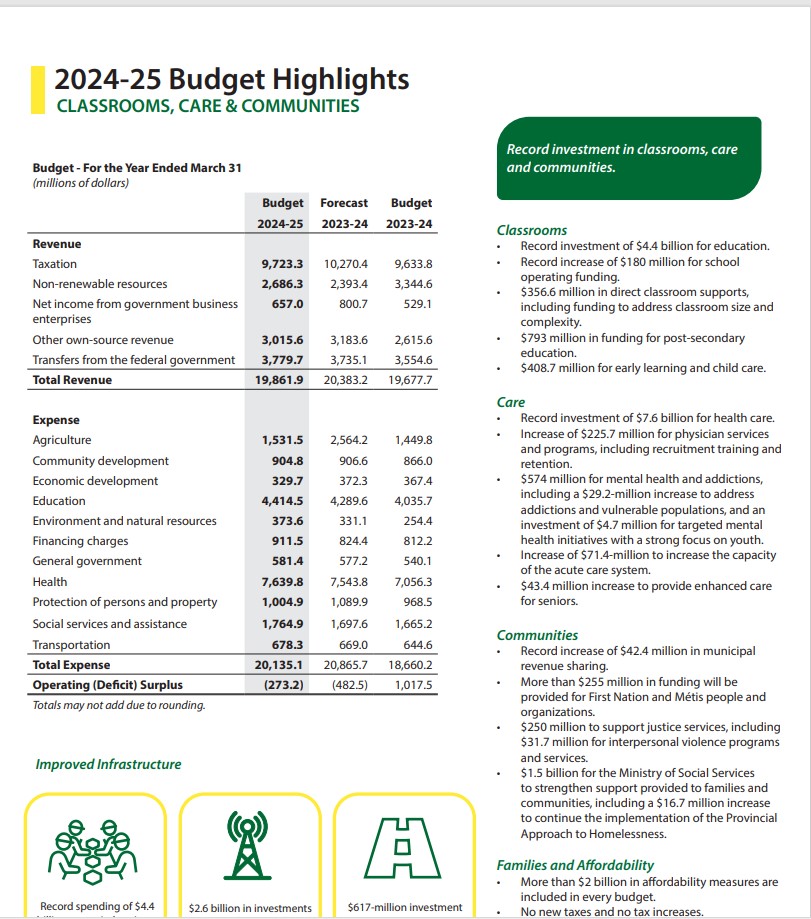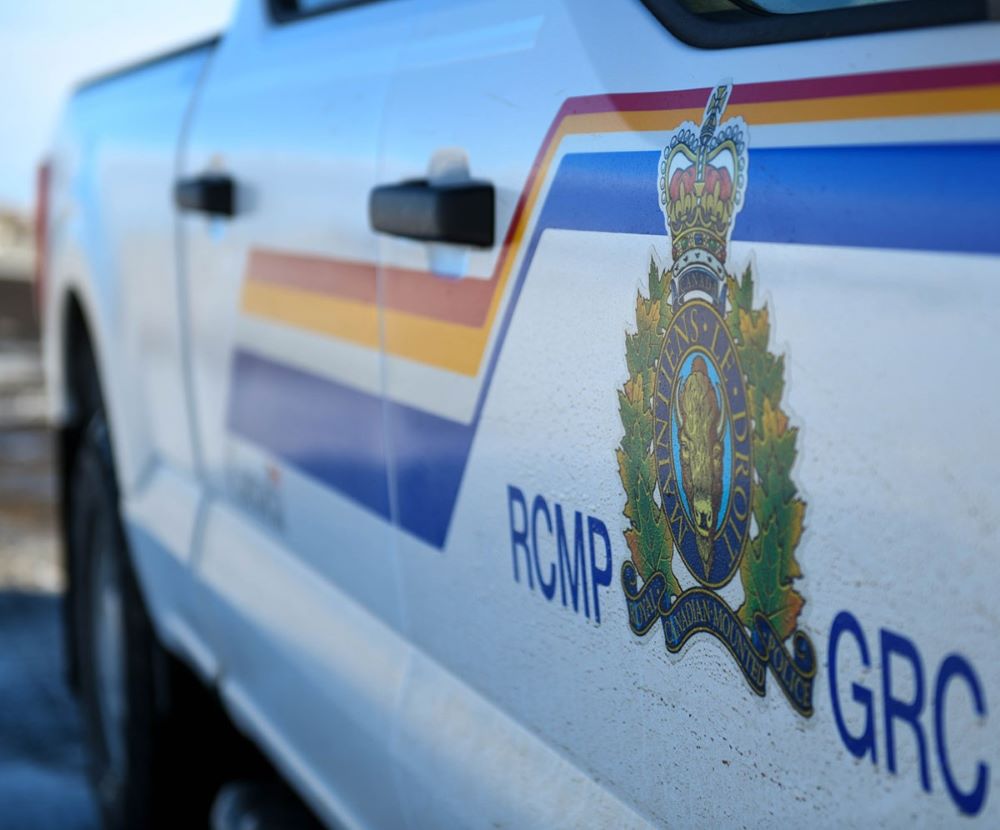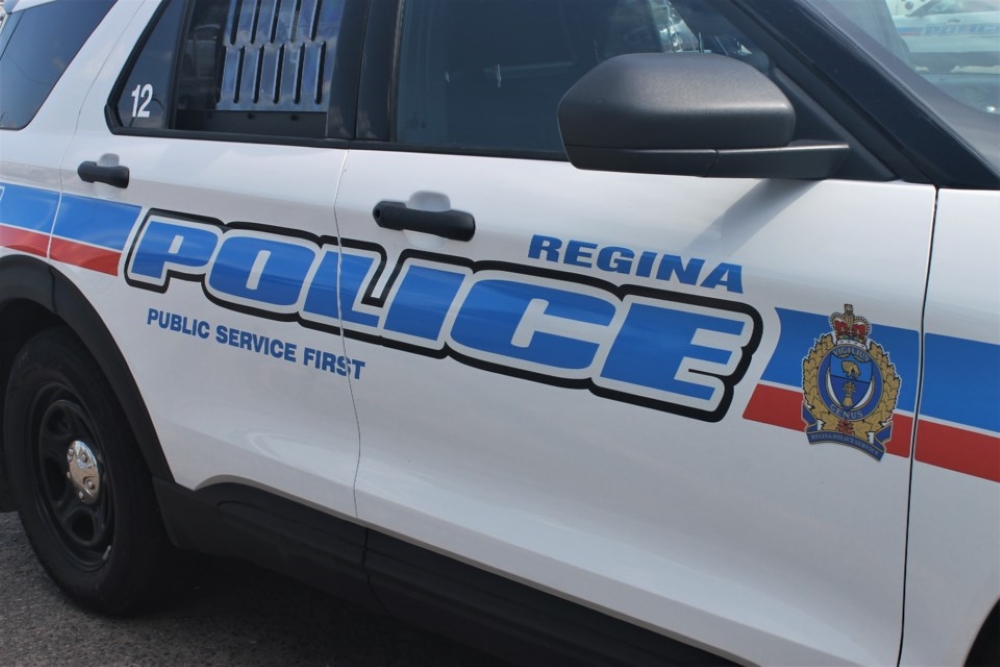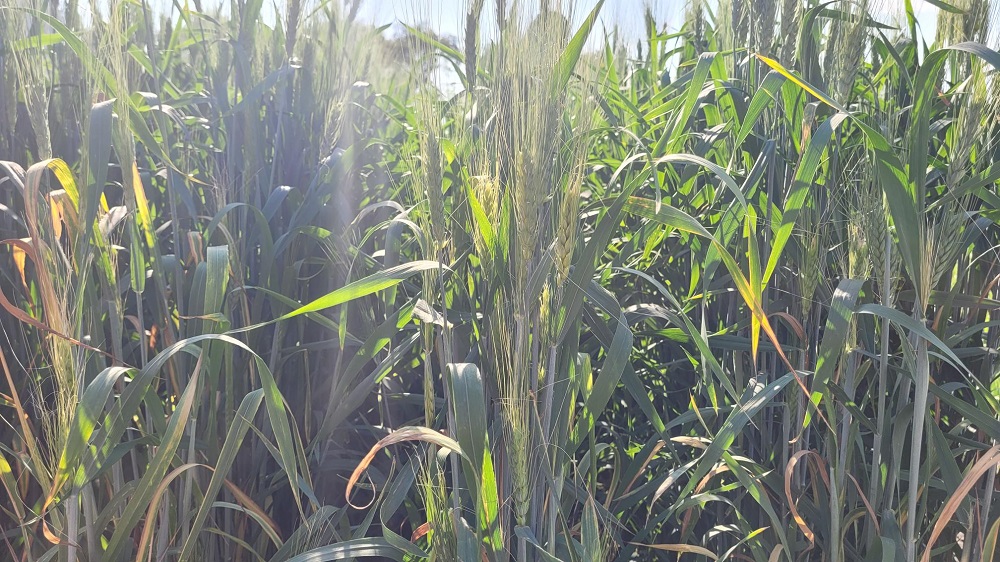The 2024-25 Saskatchewan provincial budget features major spending on education, health care, municipalities and capital investments — and has a deficit to go along with it.
A projected deficit of $273.2 million is forecast in the budget tabled by Deputy Premier and Finance Minister Donna Harpauer in the legislature Wednesday. It is the final budget of her tenure as Finance Minister, and the last one for Premier Scott Moe before he heads to the polls again in a provincial election later this year.
In speaking to reporters prior to the budget Premier Moe said it “focuses on what matters most to Saskatchewan people — classrooms, care and communities.”
As was widely expected, this budget is a high-spending one, with Moe touting record investments and the largest increases in history for school operating funding, health care, and in municipal revenue sharing. The province also is touting a record $4.4 billion in Saskatchewan Capital Plan investments.
“These investments are only possible due to the strength of a growing economy which we are so very fortunate to have in this province.”
It is a budget with few surprises, with many areas already known in advance including previously announced record increases for school operating funding and municipal revenue sharing, and prior health care announcements.
It is billed as a no-new-taxes and a no-new-tax-rate-increases budget, which means no PST reductions or breaks to the gas tax. The affordability measures the government points to include more than $2 billion in previously announced tax reductions and the removal of the federal carbon tax on home heating.
It is also a budget set against the backdrop of a one-day province-wide teachers strike, with STF members picketing outside the Legislature as the day unfolded.
Hanging over Budget Day was concern over the fate of the 2024 Hoopla provincial basketball tournament in Moose Jaw due to the teachers’ planned withdrawal of extracurriculars on Thursday and Friday. A decision from organizers on whether or not to cancel Hoopla was expected by 3 p.m. Wednesday.
When asked for his reaction about the scene outside the Legislature where teachers were on the picket line, Premier Moe said, “It’s unfortunate because the government has been working very hard to find points of agreement with the STF union.”
He again voiced his concern that the STF was “targeting extracurricular activities of our children” and called on STF “to return to the bargaining table. Let’s find an agreement that’s good for teachers, good for Saskatchewan taxpayers. Let’s get our teachers back to the classroom, and let’s let the kids play.”

Harpauer’s remarks
For her final budget, Finance Minister Harpauer revealed during the lockup with reporters that she received new shoes for the budget — compliments of Premier Moe, who took her on a shopping trip to buy the new shoes the previous day.
In speaking to reporters, Minister Harpauer emphasized the focus on addressing the issues that come with growth.
“Sometime later this year Saskatchewan’s population will reach 1.25 million people,” Harpauer said. “That’s up a quarter of a million people since our government was first elected. This budget responds to the challenges of a growing province by reinvesting the benefits of a growing province.”
What was almost as notable to reporters as what was in the budget was what was not in the budget, with no contingency for wildfires or for drought — two items that in the recent past had caused unexpected additional spending.
When asked if the government had a spending problem, Harpauer said she categorized it more as “expense pressures to a growing province.” She pointed to the record investments in education and health care, both of which she said “I feel it needs to be done at this point in time.”
“We definitely have more kids in our classrooms…we have more people coming through the doors of our health care facilities,” said Harpauer.
Here is a rundown of what is in the 2024-25 budget.
Deficit
As was widely expected, the 2024-25 Budget is in deficit, projected at $273.2 million. This is not much different from the previous fiscal update in December of $250.5 million.
However, as of the latest third-quarter update released on Budget Day, the 2023-24 deficit currently stands at $482.5 million, a far cry from the $1 billion surplus projected a year ago. Expenses have gone up $2.2 billion from budget and revenues up $705.5 billion.
Despite that dose of negative news, the deficit is forecast to be reduced in 2024-25. Harpauer is expecting the province to return to surplus in 2025-26, pointing to increasing revenues due to a growing population, a growing labour force and economy.
Revenues are forecast at $19.9 billion, up $184.2 million from last year, due to growth in all revenue categories except for non-renewable resources. But the forecast is for total expenses to continue to outpace revenues. Expenses are projected in this budget at $20.1 billion, up $1.5 billion or 7.9 per cent.
The province is also pointing to having the second lowest net debt-to-GDP ratio in Canada, but that’s still going up to 46.8 percent compared to 42 percent last year.
As for the provincial debt, the gross taxpayer-supported debt is going up by $3 billion, from just under $18.1 billion to over $21 billion. The operating debt is $7.5 billion and that is not going up, but $13.6 is going to capital and other GSO’s and that is an increase. The overall gross debt amount for 2024-25 is going up from $30.8 billion in the 2024 budget forecast to a 2025 projection of $34.8 billion.
“Classrooms”
There is little of surprise in the education budget, details of which were largely unveiled a couple of weeks earlier by Premier Scott Moe on social media.
As expected, there is a record investment of $3.3 billion for education, up 8.1 per cent or $247.8 million. The 27 school divisions will receive $2.2 billion in school operating funding, an increase of $180 million or 8.8 per cent. And there is $356.6 million in classroom supports, up $45.6 million over last year, including a commitment to addressing classroom size and complexity.
On the capital side is $216 million for K-to-12 education capital projects, up 41.8 per cent.
The budget includes ongoing funding for 11 projects and three major renovations currently underway across Saskatchewan. There is also funding for planning nine new schools and two renovations. Those include: a new Regina East Joint-Use facility for a public and Catholic elementary school; a new Saskatoon East joint-use facility for a public and Catholic high school; replacement for Minahik Waskahigan High School in Pinehouse; pre-planning for a new Regina East joint-use facility for a public and Catholic high school; pre-planning for a new Saskatoon East joint-use facility for a public and Catholic elementary school in Brighton; the South Corman Park School renovation; and Swift Current Comprehensive High School renovation.
$28.5 million is being allocated for relocatable classrooms, which will be in addition to the $32 million announced for relocatable classrooms during the last fiscal year.
There is also $793 million in funding for post-secondary education, up 3.7 percent. Those students will see $46.5 million in financial supports and there is a new grant to help reduce financial barriers for low-income students with dependents.
There is also continued support for skills training programs and services for those unemployed or underemployed persons.
“Care”
The 2024-25 Budget will see a record $7.6 billion investment through the Ministry of Health, with funding to expand patient care and increase access to services.
Saskatchewan Health Authority gets almost $4.7 billion, a record amount which includes an operating increase of $248.3 million, or 5.6 per cent.
$71.4 million will address increasing capacity of the acute care system, including $30 million for the Saskatoon and Regina capacity pressures, and nearly $10 million increase for the Regina Urgent Care Centre.
There is also funding towards reducing the surgical waitlist to achieve a three-month wait time target years ahead of schedule. There are also investments to the Health Human Resources Action Plan to hire, train and retain more health care professionals in the province, as well as for credential recognition supports.
A record $574 million will go to mental health and addiction programs and services, up over seven percent. A $34 million increase is going to mental health and addictions, to expand access to targeted initiatives for children and youth, addictions and vulnerable populations.
Saskatchewan Cancer Agency funding is up $26.1 million for a record budget of $248.9 million. This includes a $3.5 million increase for breast cancer care and screening including technology enhancements and new diagnostic imaging equipment, as well as establishment of a new Breast Health Centre in Regina which was announced in recent weeks by Minister of Health Everett Hindley.
Targeted seniors’ care initiatives are up $43.4 million, aimed at allowing seniors to live safely and comfortably in their home communities.
On the capital side is $516.8 million in health infrastructure, such as new hospitals and health care centres, up $179.3 million. It includes $180 million for Prince Albert Victoria Hospital redevelopment; $55 million for the Weyburn General Hospital replacement project; $27 million for construction of the La Ronge long-term care project; $21.9 million to complete the Regina General Hospital parkade; and $20 million for the Regina long-term care specialized beds project.
“Communities”
As was previously announced at SARM, there is an increase of $42.4 million in municipal revenue sharing, up 14.2 per cent from the previous year, for a record $340.2 million.
$29.5 million is going to support municipalities and industry partners for investments in the provincial transportation system.
$719.4 million is going to the Ministry of Corrections, Policing and Public Safety, with $228 million to fund RCMP operations and $21.6 million for their First Nations Policing Program. $7 million is going to the Saskatchewan Marshals Service as it looks to start up in 2026.
The Ministry of Justice and Attorney General is getting over $250 million to support justice services and community wellbeing, with $31.7 million for programs and services to reduce interpersonal violence.
Saskatchewan Public Safety Agency is getting funding to renew its current air tanker fleet, which is approaching the end of its life in 2027.
Over $255 million in targeted funding will go to First Nation and Métis people and organizations, up $6.1 million.
Affordability relief
The budget will include $2 billion in affordability measures for Saskatchewan residents which were previously announced in past budgets.
One of the key measures the government is pointing to is its decision to stop collecting carbon tax on natural gas and electric residential home heating, a move the province expects to save Saskatchewan homeowners an average of $400 per year.
Affordability measures in place include the Active Families Benefit, Children’s Drug Plan and programs to help fund insulin pumps and glucose monitors.
Aimed at low-income individuals is a $17 million investment for the first full year of the Saskatchewan Employment Incentive Program.
Additional supports for homeowners include a renewed PST Rebate on New Home Construction Program, and the Saskatchewan Secondary Suite Incentive Grant Program.
To the Opposition NDP’s dismay, there is no removal of the gas tax, something the NDP has called for daily in Question Period in recent weeks. During the Opposition’s embargoed media availability Wednesday morning, Opposition Leader Carla Beck and Finance Critic Trent Wotherspoon hammered the Sask Party on the affordability issue, accusing them of delivering no cost of living relief in the budget, with no cuts to the gas tax and also no cuts to the PST.
Social Services
A record $1.5 billion is going to the Ministry of Social Services, up $112.4 million, or 7.8 per cent.
The Provincial Approach to Homelessness will see an additional $16.7 million, with $7.2 million more going to emergency shelter operations.
Saskatchewan Housing Corporation is to invest $83.4 million towards repairing and maintaining provincially owned housing units. $9.6 million in provincial funding will go to repair SHC units to reduce vacancies and respond to increasing demand.
Monthly income assistance benefits go up by three per cent for clients of both Saskatchewan Assured Income for Disability, and Saskatchewan Income Support. The amount of funding for both programs has been a hot issue at the Legislature in recent years.
For seniors, the Personal Care Home Benefit monthly income threshold goes up $100, up to $2,500, to make it more affordable for those living in a licensed care home.
Road Infrastructure
The Ministry of Highways budget totals $741 million and will go to improve over 1,100 km of provincial highways. The plan for 2024-25 is to do 260 km of repaving, 765 km in light and medium pavement treatments, 58 km of Thin Membrane Surface improvements and rural highway upgrades, and 25 km of gravel rehabilitation.
$17.6 million is going to the Road Safety Improvement Program. There is also $73.5 million to build, operate and maintain the transportation system in northern Saskatchewan and $59.3 million to repair or rebuild 17 bridges and replace over 100 culverts.
Economic growth measures
The province will be extending the small business tax rate reduction to a rate of one per cent until June 30, 2025. Eligible business income threshold for small business tax remains at $600,000.
Also in the budget is $40.6 million to help expand exports and grow Saskatchewan’s presence in international markets.
Several investment incentives are included, which the province says is aimed at building new opportunities to diversify the economy, increase exports and attract investment. Included are two new targeted incentives announced in the province’s new Investment Attraction Strategy – the Saskatchewan Critical Mineral Innovation Incentive. and the Critical Mineral Processing Investment Incentive.








